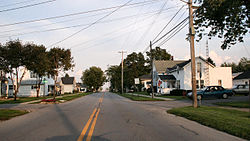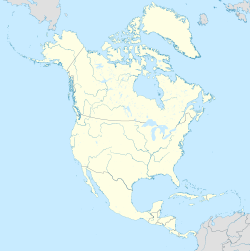Beaverdam, Ohio | |
|---|---|
 Streetside in Beaverdam | |
 Location of Beaverdam, Ohio | |
 Location of Beaverdam in Allen County | |
| Coordinates: 40°49′58″N83°58′26″W / 40.83278°N 83.97389°W | |
| Country | United States |
| State | Ohio |
| County | Allen |
| Township | Richland |
| Government | |
| • Mayor | Roberta Jean Beemer[ citation needed ] |
| Area | |
• Total | 0.63 sq mi (1.63 km2) |
| • Land | 0.63 sq mi (1.63 km2) |
| • Water | 0.00 sq mi (0.00 km2) |
| Elevation | 863 ft (263 m) |
| Population (2020) | |
• Total | 319 |
| 314 | |
| • Density | 506.35/sq mi (195.54/km2) |
| Time zone | UTC-5 (Eastern (EST)) |
| • Summer (DST) | UTC-4 (EDT) |
| ZIP code | 45808 |
| Area code | 419 |
| FIPS code | 39-04752 [4] |
| GNIS feature ID | 2398061 [2] |
| Website | www.beaverdamoh.com |
Beaverdam is a village in Richland Township, Allen County, Ohio, United States. Its population was 319 at the 2020 census. Beaverdam is part of the Lima, Ohio Metropolitan Statistical Area.




